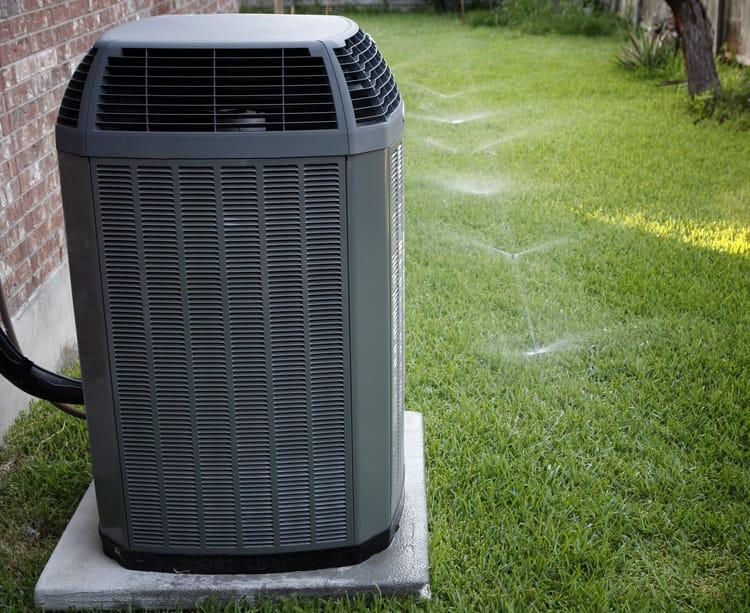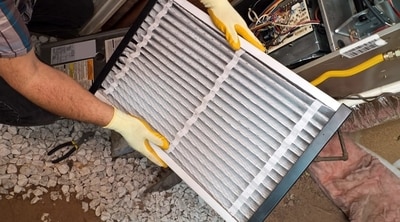Summer HVAC Maintenance Tips

The calendar may not say summer yet, but the temperatures sure do! Air conditioners across the country have fired up and are cranking out the cool to keep homes comfortable as temperatures and humidity increase. Because of this around the clock use, summer HVAC maintenance is extremely important to the health of your system.
Our summer HVAC maintenance tips help you keep your air conditioner in top shape this season. Don’t risk expensive breakdowns and sweltering heat indoors as you wait for help – be proactive with summer HVAC maintenance and limit your risk of malfunctions and discomfort.
HVAC Maintenance Tips for Summertime
This summer, make these HVAC maintenance tips part of your household routine. You’ll benefit with better comfort control indoors plus lowered utility bills for summer savings!
Summer HVAC Maintenance Tune-Up
Often performed in the spring before the first day of cooling system use each year, an HVAC maintenance tune-up is a skip you should never skip, even if we are nearing summer. During a maintenance tune-up, your technician thoroughly inspects, troubleshoots, and cares for essential system components to ensure efficient performance and help prevent breakdowns over the coming months.
If you haven’t had a maintenance tune-up, move this task to the top of your summer to do list – preventative HVAC maintenance is an investment in your system that rewards you greatly!
Summer Thermostat Settings
Summertime sees household schedule changes, especially if you have kids who are now out of school or travel during these months. With the cooling system on, it’s time to adjust your thermostat settings to account for your family’s new schedule and any vacations that occur.
Consider your household’s potential summer schedule changes and be sure to program your thermostat around them –
- Later wake-up times in the morning, since there’s no bus to catch for kids
- With family members home all day, adjust setbacks for more occupancy hours rather than a vacant home from 8am to 5pm
- Summer sports and activities that keep you out of the home for periods of time
- Later bedtimes
When traveling, be sure to activate your programmable thermostat’s hold or vacation feature when you leave to deliver energy savings. Upgrading to a smart or Wi-Fi thermostat takes the human error element out – save money on cooling while away so you can better enjoy summer experiences!
Improve Airflow

Good airflow through your air conditioner helps the system function efficiently and deliver better comfort throughout your living areas. These HVAC maintenance tips show you how to improve airflow through your cooling system this summer:
- Change your air filter on a regular basis. In the summertime, filters often fill up with debris quicker than in the spring because the system runs more frequently. Check the filter each month to determine if a change is necessary. Consider upgrading to a higher MERV filter for better contaminant control in the home and lessen summer allergy symptoms.
- Clean off the exterior air conditioner. Do this whenever you do lawn maintenance or cut grass. Grass clippings, mulch, leaves, and other outdoor debris can gather on your condensing unit and block the fins that allow heat to leave the system. Gently brush debris away.
- Clear the area around the outdoor unit. In addition to cleaning, make sure there are no plants or other items in the two feet of space immediately surrounding the unit. Prune shrubs and branches nearby and pull up vegetation that has grown around the unit’s base. Relocate outdoor storage away from your unit to eliminate any airflow obstructions.
- Ensure vents are open and unblocked. Walk through your home and check every vent, register, and return air grille. All vent and register louvers should be set open – do not close these in attempts to cut off AC to unused areas, as this is not a smart way to save energy. Move rugs, furniture, and other items away from the vents and grilles to allow air to freely circulate through the ducts, into your home, and back to the air conditioning system.
HVAC Maintenance Tips for Better Indoor Air Quality
High humidity levels indoors are a big problem for many households throughout the country during the summer months. The natural rise in humidity that makes you feel sticky outdoors also infiltrates your indoor living areas and has the potential to cause discomfort when not treated.
These summer HVAC maintenance tips help you combat humidity and feel more comfortable inside your home:
- Install whole house dehumidifiers to remove excess moisture in the air. Dehumidifiers pull out moisture as air cycles through your HVAC system. While air conditioners help for dehumidification to some extent, the summer humidity levels are often too high for them to efficiently tackle on their own.
- Inspect your condensate drain system to ensure moisture created by the cooling process properly exits your home. Condensation backup in these lines can lead to higher humidity in the home as well as water damage to your house and cooling equipment.
Your Complete Guide to Summer HVAC Maintenance
Learn what to do each month of summer, as well as the rest of the year, through the following HVAC.com resources! We explain the exact steps you need to take each month to keep your system in great working order, plus HVAC maintenance tips to improve comfort and performance.
Summer HVAC Maintenance Help through HVAC.com
As the world’s leading resource site for all things heating, cooling, and indoor air quality, HVAC.com is dedicated to helping you take care of your air conditioner this summer. Scan our resources to find more HVAC maintenance tips and learn how summer HVAC maintenance protects your equipment and your household.